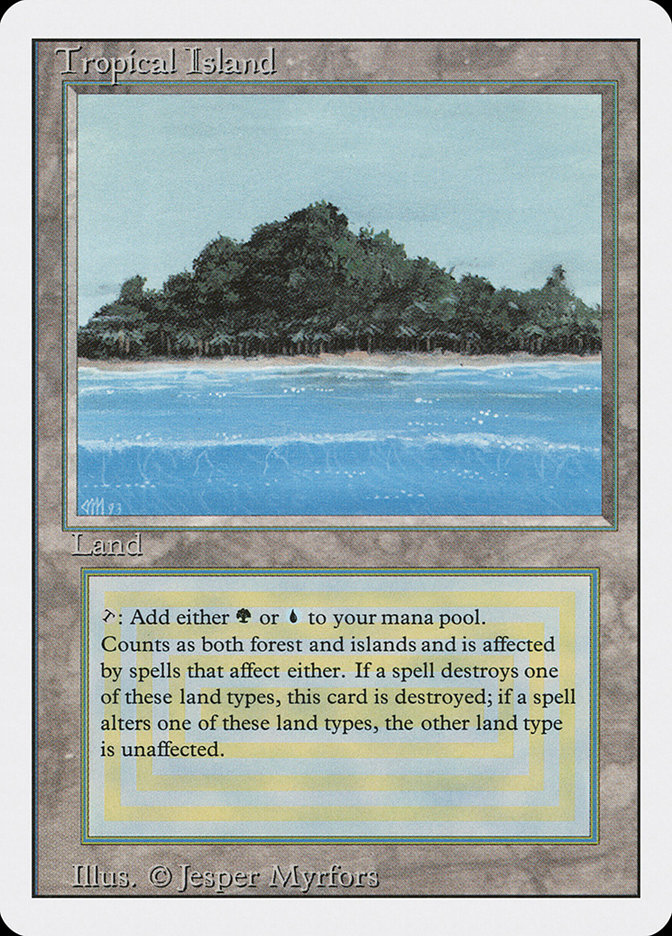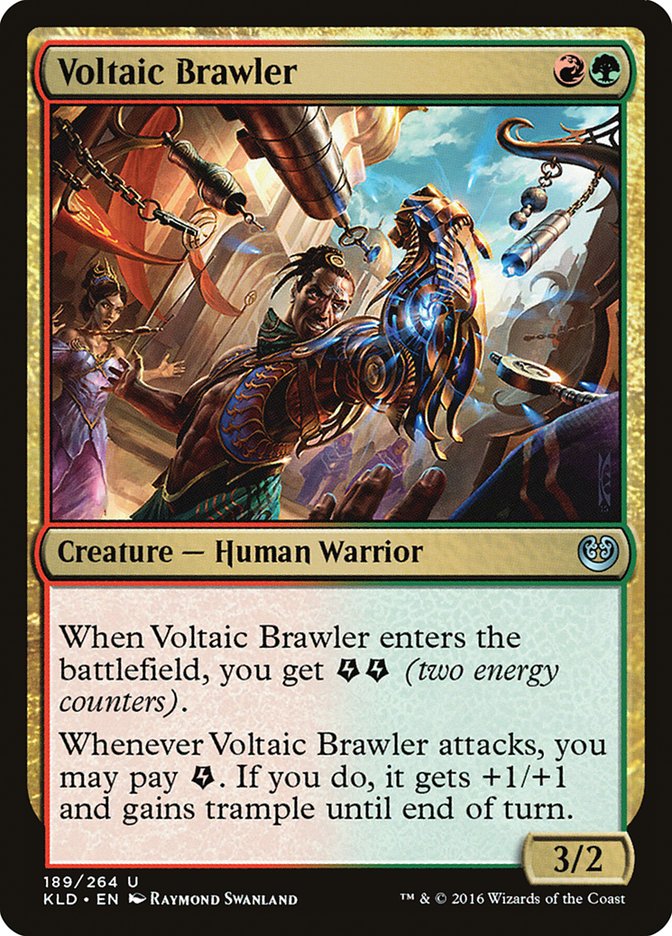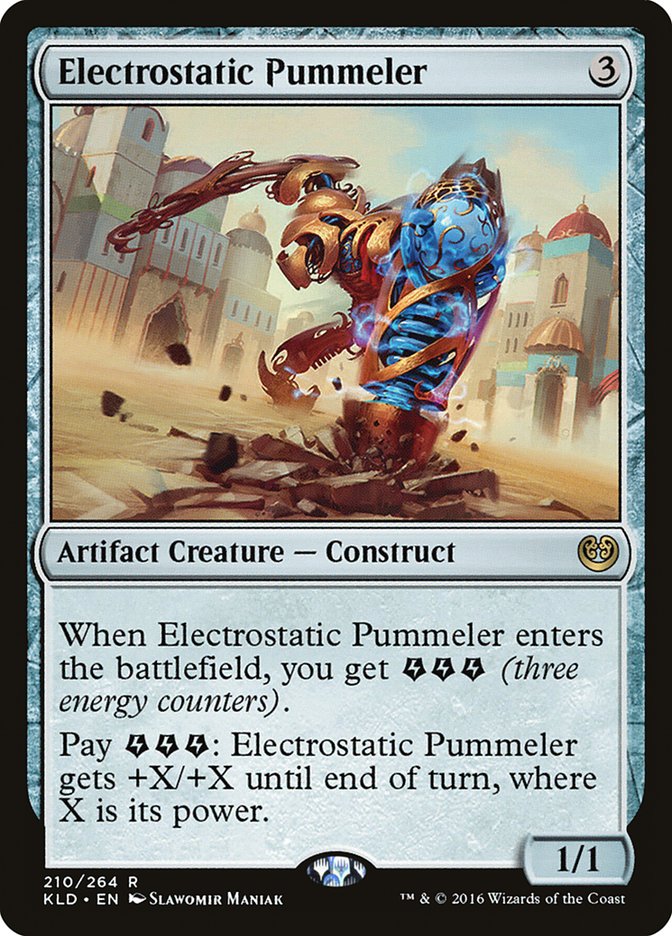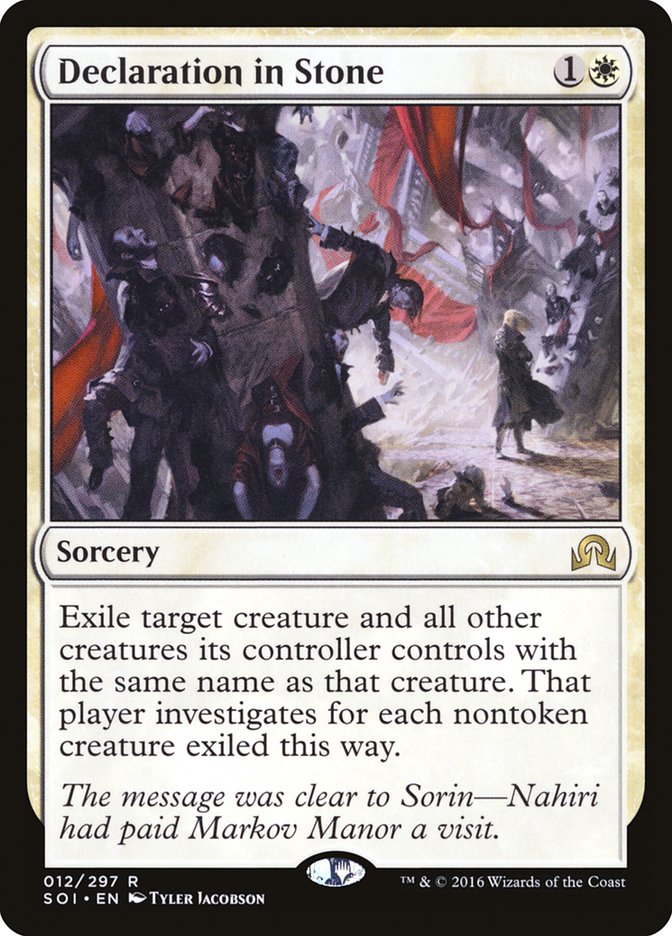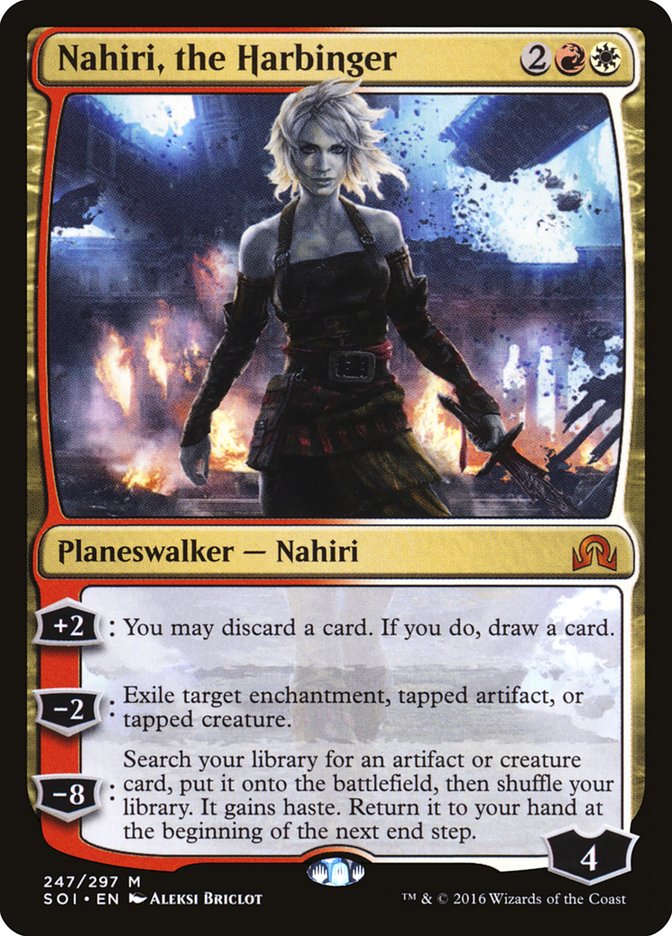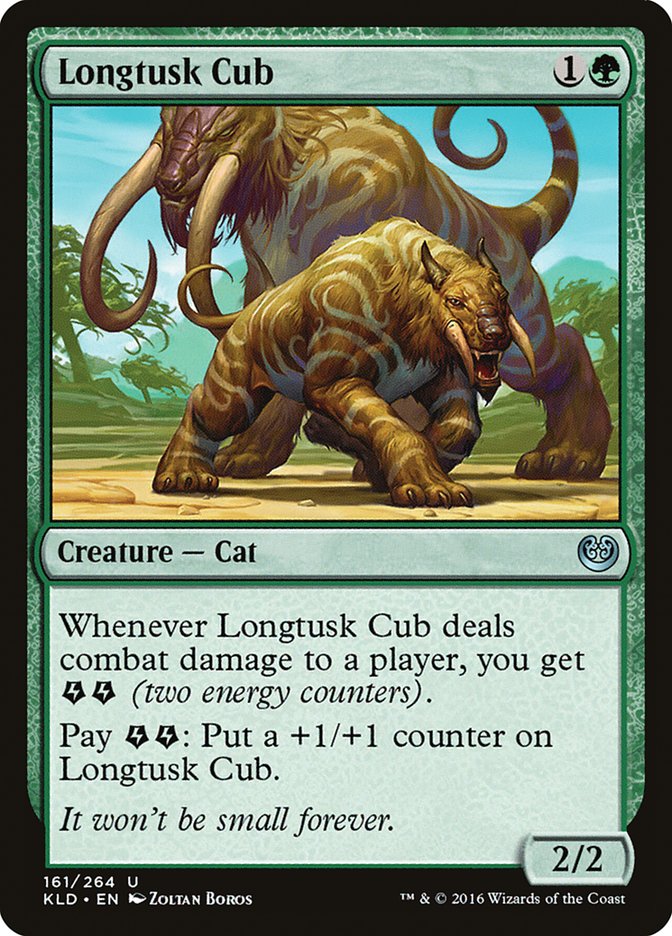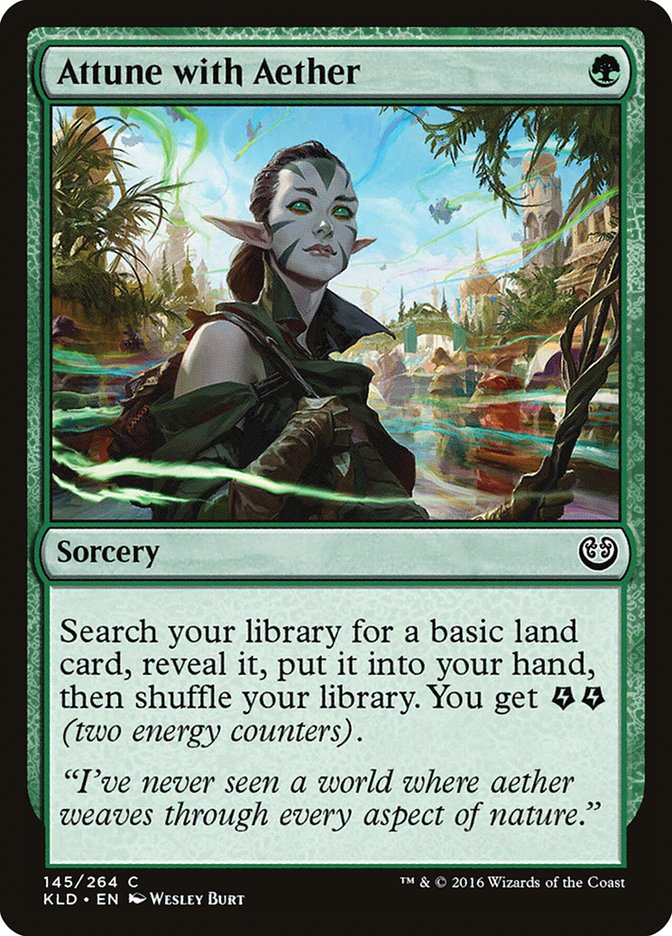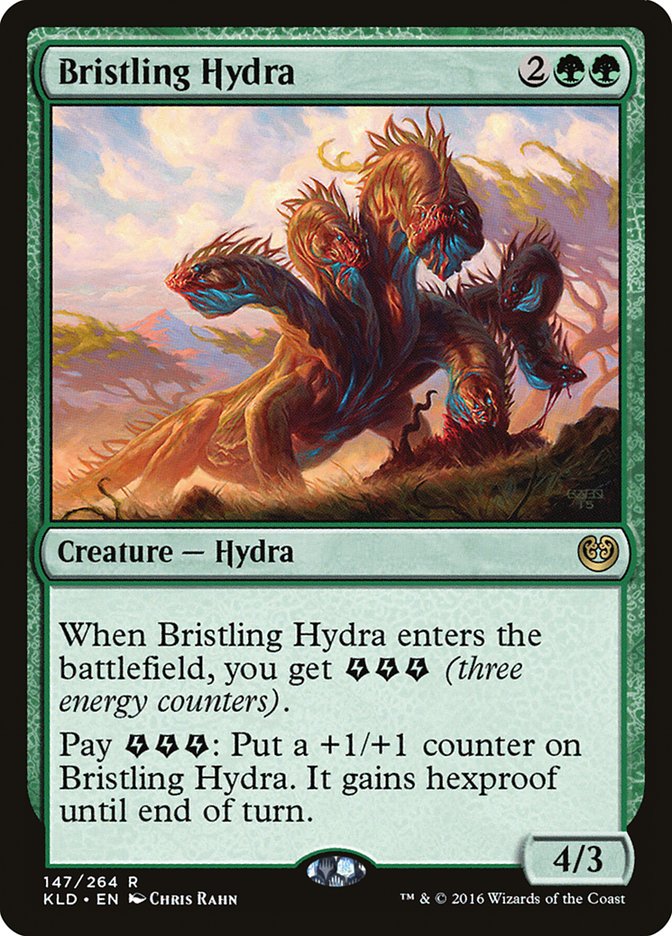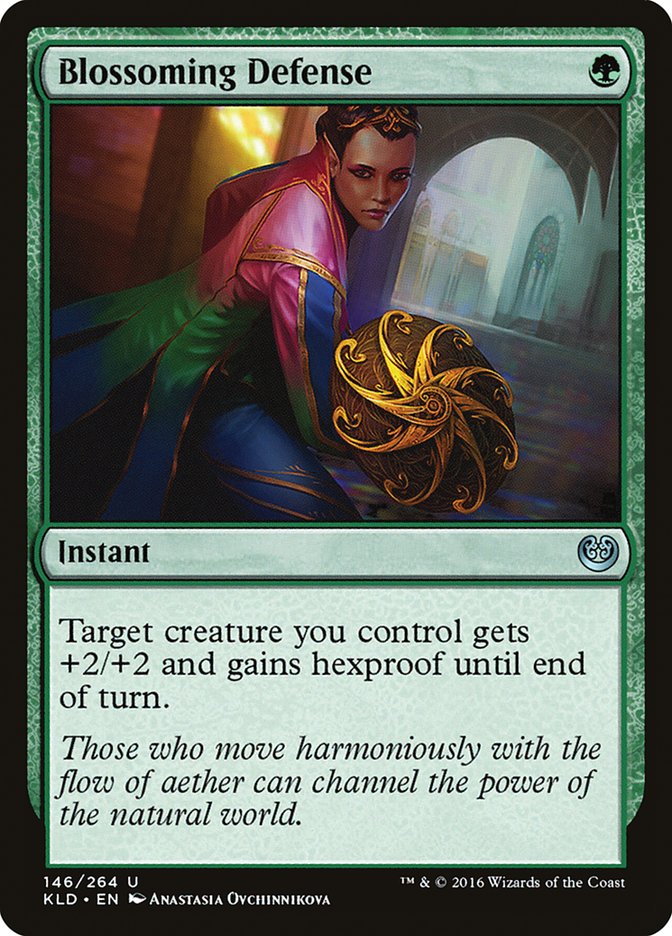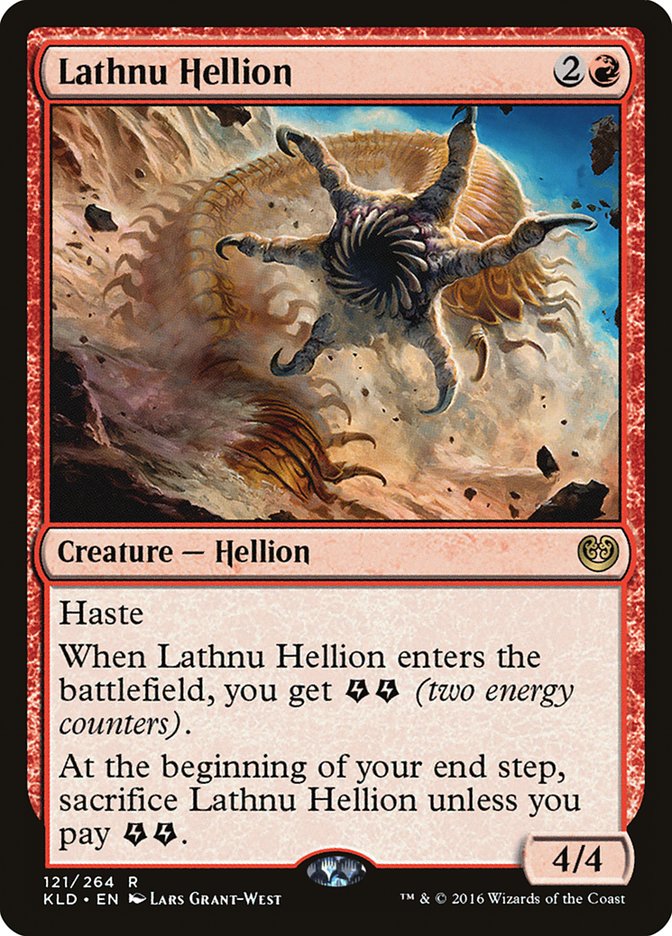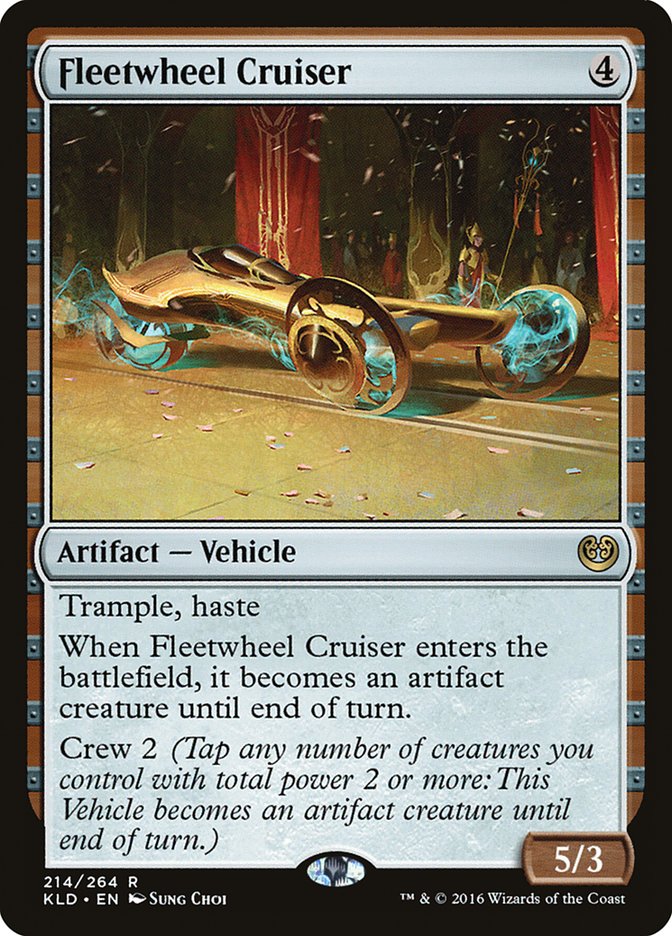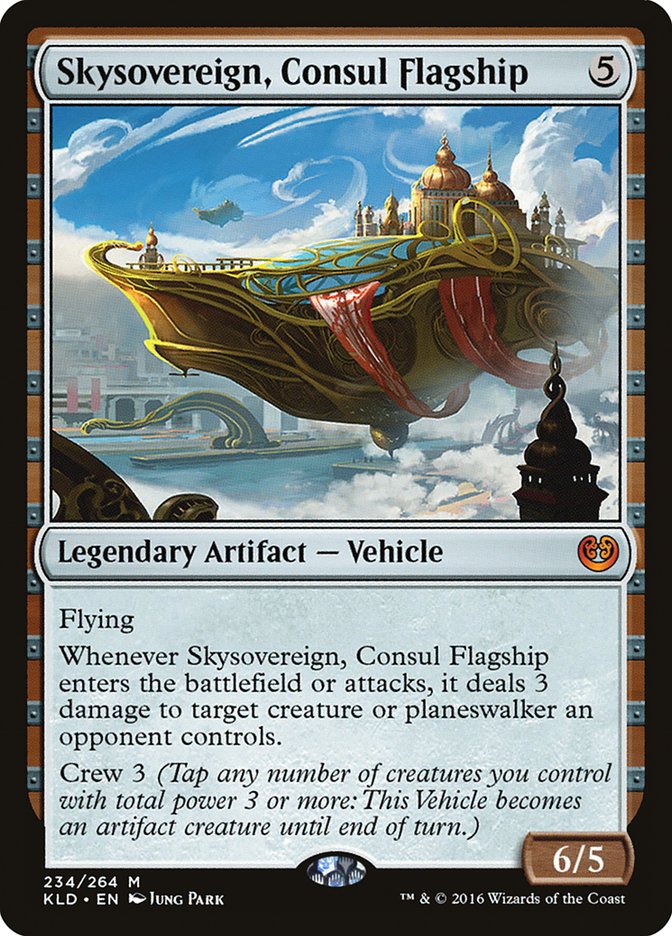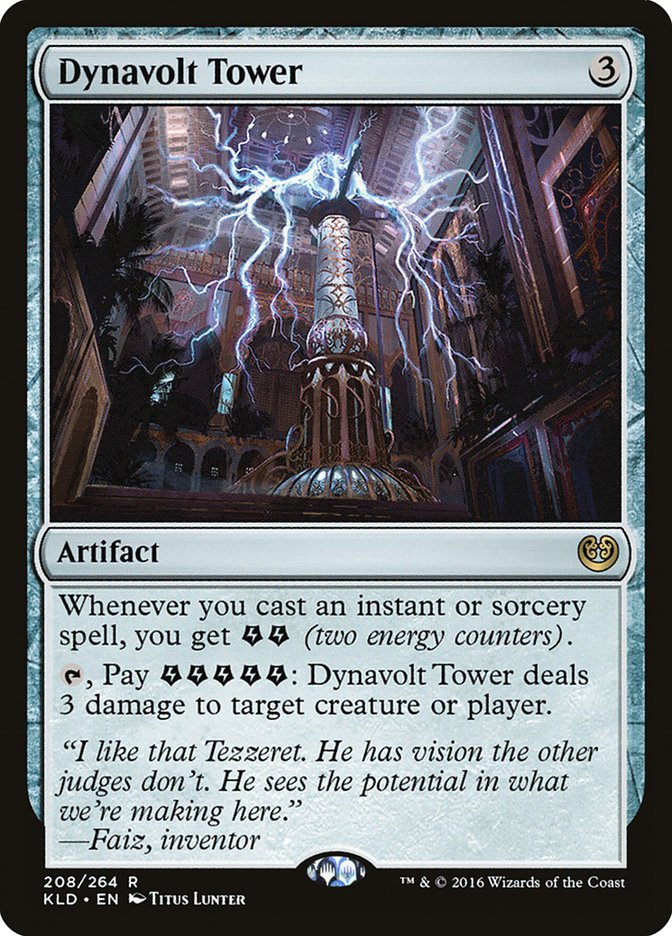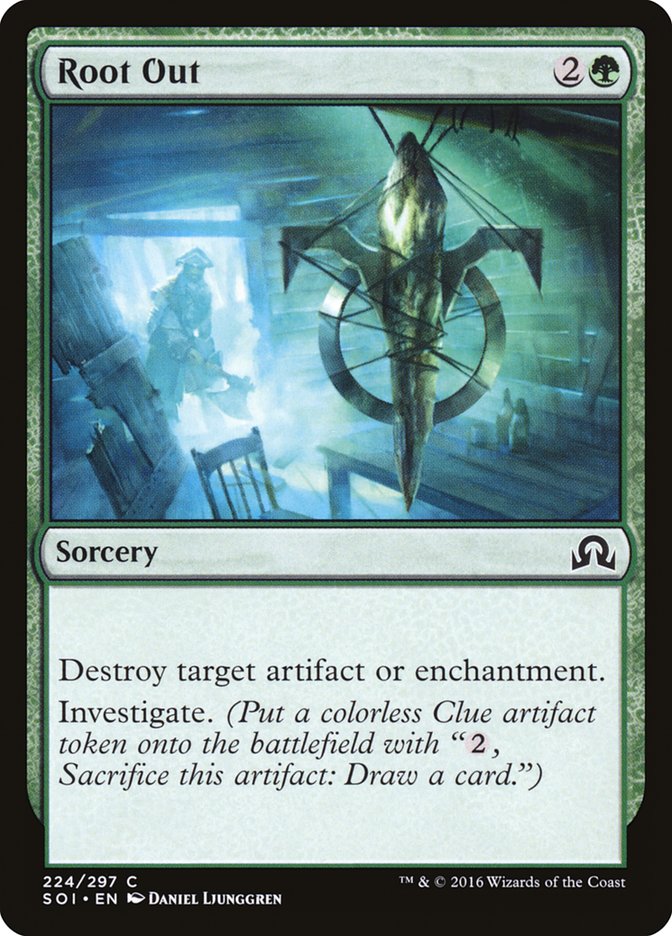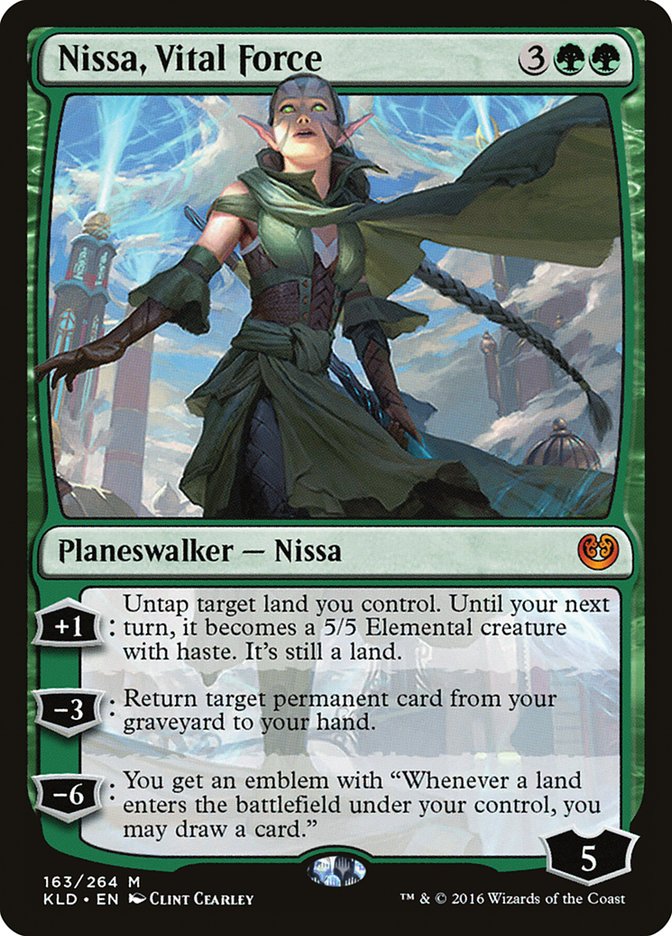There are certainly worse places to not make Top 8 of a Pro Tour.
Hawaii is awesome.
It’s a nice consolation prize to be able to go for a swim in the ocean and let the warm rays of sunshine and soothing waves wash off the feeling of defeat.
If you’re taking a dip at the beach and perform a slow 360 rotation to take in your surroundings, you’ll probably see something along the lines of a dog on a surfboard, a pirate ship, helicopters, towering buildings, beach babes, parasailing, five wedding parties taking photos, ocean for miles and miles in one direction, and in the other, an island paradise.
Right, the Magic.
Another Pro Tour, another “close but no cigar” finish.
I played R/G Energy to a 40th-place finish, and there’s a lot to talk about, so let’s not waste time with further daydreaming and get right to the list:
Creatures (22)
- 4 Tireless Tracker
- 1 Verdurous Gearhulk
- 4 Longtusk Cub
- 4 Voltaic Brawler
- 2 Lathnu Hellion
- 3 Bristling Hydra
- 4 Servant of the Conduit
Planeswalkers (2)
Lands (21)
Spells (15)

Deck Philosophy
R/G Energy can function as a regular aggro deck but can also do a good job acting as a grindy value deck that focuses on making good resource trades and slowly pulling ahead.
Overall the deck was great and I was really happy with it. I enjoyed playing it, it felt powerful while still being off the radar, and I finished up 8-2 at the Pro Tour with it. I’m not entirely sure how to summarize why it felt so good and consistently performed well for me, since at first glance it might just look like a smattering of decent green and red cards, but I’ll try.
I was fairly certain early on into my testing that I would play an Energy deck of some sort.
I think I’ve finally learned my lesson when it comes to building Pro Tour decks. A few years ago I had the mindset of building the best deck by updating lists based on strategies that already existed. Now I try instead to focus on brewing and strongly incorporating the new cards and mechanics the most recent set has to offer.
For Kaladesh, that was definitely Energy.
The first thing of note is that Energy is a unique mechanic (for Magic, at least, if not Pokemon) and anything unique isoften very powerful.
Here are some special things about Energy: Energy (usually) doesn’t require spending extra mana to cash it in. Good. Energy is flexible, and can be used for many different cards. Good. It’s also versatile depending on what cards you have in your deck. Good. Energy also doesn’t disappear, so you don’t have to immediately cash it in.
The best play is often holding onto Energy for a rainy day or cards that will use it better. Voltaic Brawler’s Energy, for example, would often be saved for the cards that would use it more effectively.
I didn’t see Voltaic Brawler as 4/3 trample for two mana more than I saw it as a generic 3/2 that adds two Energy, with occasional upside when you wanted to pressure the opponent.
Before I go over the cards I put into my finished decklist, I’ll discuss some ideas I tried that didn’t make the cut.
One of the first things I tried was Aetherworks Marvel. I liked the idea of the card and tried to get it to work but ultimately failed to get a version that I felt comfortable with. One of the biggest problems is the deck feels completely helpless against disruption.
Electrostatic Pummeler is also another exciting use for Energy that interested me. Alongside Larger Than Life, you only need six Energy and you’ll have a 20/20 Electrostatic Pummeler with trample. While this is great in theory, and somewhat reminiscent of Splinter Twin and Deceiver Exarch back when they were in Standard, it turned out to be a little too inconsistent and terrible against control decks. It would be excellent against Aetherworks Marvel and a non-interactive metagame in general.
I wanted to find a version that started out as an Electrostatic Pummeler deck and then switched to Tireless Tracker and Chandra, Torch of Defiance value R/G Energy post-sideboard, but I ultimately couldn’t get it to work. One of the main reasons was that normal R/G Energy was performing so well, I just didn’t need to do anything fancy.
Adding a blue splash in the sideboard for Negate and Ceremonious Rejection was also something I thought I’d end up doing. It’s incredibly easy to add a small splash thanks to Attune with Aether, Aether Hub, and Servant of the Conduit. Once again, though, it just didn’t seem worth it. The counters were excellent against Aetherworks Marvel decks and Metalwork Colossus decks but kind of underwhelming everywhere else, and I didn’t think it would be a necessary splash.
Turns out Aetherworks Marvel was a fifth of the metagame, even though I didn’t think it was a very good deck. Still, I ended up beating it every time I played against it by just presenting a fast clock, and they could never get me two out of three games. Now that Aetherworks Marvel is a known entity and control decks seem like they will pick up in popularity, I expect things to get even worse for it; even if it may have been a reasonable choice for the Pro Tour, it feels very glass cannon.
Last, I also tried out a white splash in the sideboard for a couple of Declaration in Stone; Nahiri, the Harbinger; and Consulate Surveillance. If I wasn’t going to run Electrostatic Pummeler, Consulate Surveillance was going to be my Consulate Shaun Prize as the ultimate answer that gets around hexproof and stops pump spells dead.
Declaration in Stone is good against Prized Amalgam and Metalwork Colossus, and Nahiri, the Harbinger is a good all-purpose value card that could also exile tapped Smuggler’s Copters. But in my experience, neither splash quite seemed worth it, and I’m ultimately happy I kept things simple. There are plenty of powerful green and red cards and more than enough to work with for what we’re up against at the moment, I think.
It won’t be small forever. ( ͡° ͜ʖ ͡°)
Noose Constrictor on steroids, Longtusk Cub is capable of making some serious permanent strength gains as long as it drinks its Energy Milk.
Attune with Aether into Longtusk Cub is a completely busted opener by itself. It also scales nicely in the late-game when you have some extra Energy lying around. It makes combat, blocking or attacking, horrible for the opponent if you’re ahead at all on the battlefield or in Energy.
This is a tricky card, but one that I love. It can lead to some very clunky starts with Game Trail or Cinder Glade, or awkward hands with multiple Attunes but no lands that you have to mulligan.
That said, adding two Energy is no joke.
One Energy is worth 0.6 damage from Dynavolt Tower, one damage with Harnessed Lightning, half a +1/+1 counter on a Longtusk Cub, and so on. You get to search up a land and also almost get a Lightning Bolt out of the deal if you have Dynavolt Tower out.
Attune with Aether is also secretly nice with Chandra, Torch of Defiance, since you can cast it when you exile it with her +1 but you can’t cast lands.
Tireless Tracker is the key to helping make the deck resilient in longer games. It’s perfect for applying pressure and putting your opponent on the back foot in awkward spots while building up a nice stock of clues, just in case your opponent deals with your first wave.
Nearly impossible to deal with by conventional removal if you have enough Energy. Great for attacking or blocking and making sure nothing bad happens during combat.
The deck is not great for Smuggler’s Copter, but Smuggler’s Copter is great for the deck. Flying, looting, and being immune to mass removal is excellent and exactly what we want, but we don’t really have amazing Crew members, and there are a bunch of competing two-drops.
Our creature count isn’t even that high, and Blossoming Defense is even mostly redundant on Bristling Hydra. Often you’re spending all your mana anyway and don’t have time to leave it up. Usually I’d just prefer to have another threat rather than risk getting flooded with Blossoming Defenses, which is why I only ran one, but having access to the effect can still lead to the occasional blowout when you draw it. You also have the benefit that most opponents are expecting Blossoming Defense and playing around it, which means you can represent it without having it.
This deck really puts Chandra, Torch of Defiance to good use. One of the strongest plays is to ramp her out with Servant of the Conduit and then use her +1 to add mana and cast Incendiary Flow, Harnessed Lightning, or Smuggler’s Copter.
Chandra, Torch of Defiance may not have lived up to her initial hype, but she can be very powerful. It’s difficult to keep planeswalkers alive for long in this format, which often means she will just be a glorified Flame Slash or stick around for a couple of turns and get a little bit of value before dying. Her +1 mana ability also works well to crack the Clues generated by Tireless Tracker.
I initially wrote off Lathnu Hellion, not because it looked weak but because it was too aggressive and played counter to my preferred style of Magic. I only added it at the last minute with little testing but was glad I did so, and was even happy with the strange amount (two maindeck, one sideboard).
Lathnu Hellion is a huge Energy hog, which is why I didn’t go overboard and run a full playset maindeck, but the deck usually generates a decent amount of extra Energy. It also helped fill out my three-drop slot nicely and provided extra pressure against combo and control decks.
Basically just Lathnu Hellion wheels.
Much more efficient to crew than Smuggler’s Copter for our deck and capable of taking over the game in any creature-based matchup or just blocking fliers.
Against some decks, Energy is best used for the permanent effect of removing a creature from the battlefield. Dynavolt Tower kind of converts all your creatures into miniature Flametongue Kavus and is great for clearing out smaller creatures or Smuggler’s Copter.
The key to using Aetherworks Marvel for value is buying time and making trades in grindy matchups. Most of your creatures halfway pay for themselves when you find them off Aetherworks Marvel. For example, Bristling Hydra is worth three Energy when it enters the battlefield and then another extra Energy in component parts when it dies and gets recycled. Sacrificing the Clues from Tireless Tracker is also a great way to generate a little extra Energy.
Root Out was always just the best option for artifact or enchantment removal. Even though it’s slower than other options, you’re going to be glad you chose Root Out as you artifact removal of choice when you’re cracking that Clue.
A solid option against control and combo for our top-end that either kills the opponent quickly or generates value.
I wouldn’t immediately change much in the deck, since I was happy with almost everything, but here are the few tweaks I would make going forward:
Creatures (23)
- 4 Tireless Tracker
- 2 Verdurous Gearhulk
- 4 Longtusk Cub
- 4 Voltaic Brawler
- 2 Lathnu Hellion
- 3 Bristling Hydra
- 4 Servant of the Conduit
Planeswalkers (3)
Lands (21)
Spells (13)

I’d want to just shore up the deck’s Control matchup, and so I tweaked some of the numbers accordingly. Next I’ll give a quick look at some basic general sideboarding using this updated list. A lot of the archetypes and lists are still in flux, so use your best judgment during sideboarding based on what you’ve seen from your opponent.
Sideboarding
Temur Aetherworks
In:
Out:
Black-Green Delirium
In:
Out:
Black-Red Aggro
In:
Out:
Red-White Vehicles
In:
Out:
Control
In:
Out:
Blue-White Midrange
In:
Out:
Energize!
That’s it for today! Any questions you might have for me, ask away. I think R/G Energy is a great choice going forward that has plenty of play and a solid gameplan. I’m just wondering what’s going to happen to the deck and other decks using Energy cards if Aether Revolt injects even moreEnergy cards into the format…


